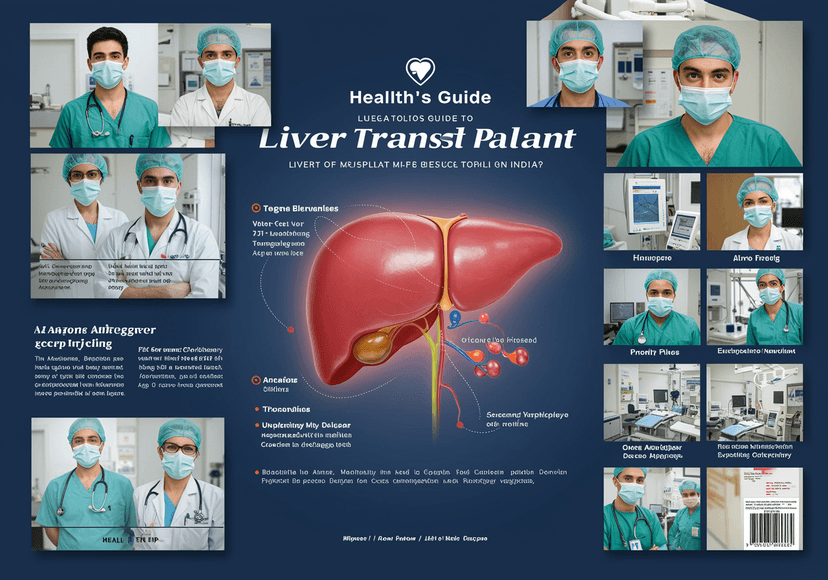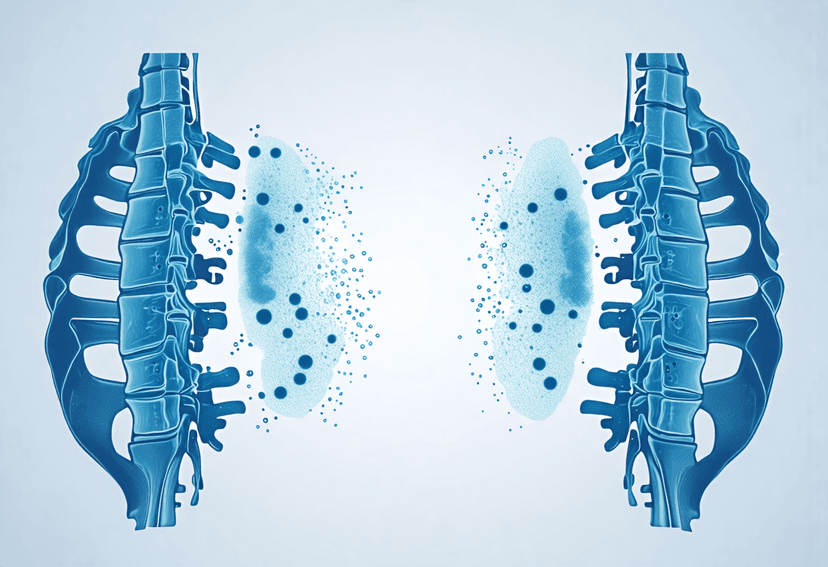
Knock Knee Surgery: A Comprehensive Guide
09 Oct, 2023
 Healthtrip Team
Healthtrip TeamKnock Knee Surgery, within the realm of orthopedics, stands as a targeted intervention aimed at correcting Knock knee. This deformity, characterized by inward angulation of the knees, prompts surgical consideration for its clinical impact on mobility and discomfort. In our exploration, we traverse the procedural landscape, dissecting the rationale, purpose, and indications that guide individuals toward this corrective endeavor. Anchored in a clinical lens, our objective is to unravel the intricacies of this surgical journey, shedding light on the evidence-based practices and post-operative considerations that define the path toward improved lower limb biomechanics.
Knock Knee
Most popular procedures in India
Knock knee, medically known as genu valgum, is a condition characterized by an inward angulation of the knees when a person stands with their feet together. In other words, the knees touch each other, but the ankles do not.
Knock Knee Surgery
Wellness Treatments
Give yourself the time to relax
Lowest Prices Guaranteed!

Lowest Prices Guaranteed!
Knock knee surgery, also called corrective osteotomy, is a medical procedure aimed at realigning the bones of the lower limbs to correct the deformity. This surgical intervention is considered when conservative treatments are ineffective in addressing the severity of genu valgum.
Purpose and Indications
I. Why Knock Knee Surgery is performed
- Correction of Deformity: The primary purpose of knock knee surgery is to correct the structural deformity in the alignment of the legs, ensuring that the knees and ankles are in proper alignment.
- Alleviation of Symptoms: The surgery is often performed to alleviate symptoms such as pain, discomfort, and difficulty walking associated with severe knock knees.
- Prevention of Complications: Addressing knock knees surgically can prevent potential complications such as joint damage, arthritis, and abnormal gait patterns.
II. Identification of individuals who may need the surgery
- Severity of Genu Valgum: Individuals with a significant and symptomatic degree of genu valgum that impairs daily activities may be candidates for surgery.
- Failed Conservative Treatments: Patients who have not experienced improvement with non-surgical interventions like physical therapy or bracing may be considered for surgery.
- Progressive Deformity: Cases where knock knees are worsening over time, especially in growing children, may necessitate surgical intervention.
Knock Knee Surgery Procedure
A. Preoperative Preparation
- Imaging and Diagnosis
- Radiographic Evaluation: X-rays, CT scans, and MRI to assess the degree of deformity, bone structure, and soft tissue involvement.
- 3D Imaging: Advanced techniques providing a detailed three-dimensional view for precise surgical planning.
- Gait Analysis: Understanding how the patient walks to determine the impact of knock knee deformity on biomechanics.
- Patient Education
- Detailed Consultation: Explaining the procedure, potential risks, and expected outcomes.
- Informed Consent: Ensuring the patient understands the surgery, alternatives, and potential complications.
- Preoperative Exercises: Providing specific exercises to optimize joint function and muscle strength before surgery.
B. During the Surgery
- Anesthesia:
- General Anesthesia:
- Administered to render the patient unconscious for the entire procedure.
- Ensures the patient is pain-free and unaware during surgery.
- Regional Anesthesia:
- Numbs only the lower part of the body, allowing the patient to remain awake.
- Suitable for specific cases, providing pain relief while allowing awareness.
- General Anesthesia:
- Incision and Bone Realignment:
- Approach:
- Depending on the surgical plan, incisions are strategically made.
- Provides access to the knee joint while minimizing tissue disruption.
- Osteotomy:
- Precision bone cutting to correct the deformity.
- Methods:
- Wedge-Shaped Removal: Adjusts bone alignment.
- Repositioning: Corrects deformity through bone repositioning.
- Realignment Verification:
- Intraoperative imaging, such as fluoroscopy, used to confirm the accuracy of bone realignment.
- Ensures precision before proceeding to fixation.
- Approach:
- Fixation Methods (Plates, Screws):
- Plate and Screw Fixation:
- Stabilizes repositioned bones using metal plates and screws.
- Provides structural support during the healing process.
- Biodegradable Implants:
- Utilizes implants that naturally degrade over time.
- Eliminates the need for a second surgery to remove metal hardware.
- External Fixators:
- Rarely used, employed in specific cases for gradual realignment.
- Supports slow and controlled adjustment of bone alignment.
- Plate and Screw Fixation:
C. Postoperative Care
- Recovery Timeline
- Hospital Stay: Typically 2-3 days for monitoring and initial rehabilitation.
- Early Mobility: Encouraging gentle movement to prevent stiffness and aid circulation.
- Physical Therapy
- Immediate Postoperative Exercises: To prevent joint stiffness and muscle atrophy.
- Gradual Progression: Advancing exercises based on the individual's healing and tolerance.
- Gait Training: Assisting the patient in relearning proper walking mechanics.
- Weight-Bearing Recommendations
- Gradual Weight-Bearing: Transitioning from non-weight-bearing to partial, and finally, full weight-bearing as directed by the surgeon.
- Assistive Devices: Initially using crutches or a walker for support.
Latest advancements in knock knee surgery
1. Minimally invasive surgery (MIS)
MIS techniques use smaller incisions and specialized instruments to perform the surgery, which can lead to less pain, less bleeding, and a faster recovery. MIS techniques are also associated with a lower risk of complications, such as infection and nerve damage.
2. Computer-assisted navigation
Computer-assisted navigation uses 3D images of the patient's knee to help the surgeon plan and perform the surgery more accurately. This can help to improve the alignment of the bones and reduce the risk of complications.
3. Distal chevron osteotomy (DCO)
The DCO is a relatively new surgical technique that is used to correct knock knee in adolescents and young adults. The DCO is a minimally invasive procedure that involves making a small incision on the outside of the knee and cutting the shinbone (tibia) at a specific angle. The bone is then realigned and fixed in place with screws or plates.
The DCO has been shown to be a safe and effective procedure for correcting knock knee in adolescents and young adults. It is associated with less pain and a faster recovery than traditional knock knee surgery.
4. Titanium implants
Titanium implants are strong and durable, and they are less likely to cause allergic reactions than other implant materials. This makes them a good choice for patients with knock knee.
5. Robotic rehabilitation systems
Robotic rehabilitation systems can help patients regain their range of motion and strength after knock knee surgery. These systems are often used in conjunction with traditional physical therapy to help patients achieve the best possible results.
How can we help with the treatment?
If you're on the lookout for treatment in India, Thailand, Singapore, Malaysia, UAE, and Turkey, let Healthtrip be your compass. We will serve as your guide throughout your medical treatment. We'll be by your side, in person, even before your medical journey commences. The following will be provided to you:
Global Network: Connect with 35+ countries' top doctors. Partnered with 335+ leading hospitals.
Comprehensive Care: Treatments from Neuro to Wellness. Post-treatment assistance and Teleconsultations
Patient Trust: Trusted by 44,000+ patients for all support.
Tailored packages: Access top treatments like Angiograms.
Real Experiences: Gain insights from genuine patient testimonials.
24/7 Support: Continuous assistance and emergency help.
Our success stories
Tips for preparing for Osteotomy Knock Knee Surgery:
- Learn about Knock Knee Surgery, its purpose, and potential outcomes.
- Engage in prescribed preoperative exercises for enhanced muscle strength and flexibility.
- Maintain a well-balanced diet rich in essential nutrients to support overall health.
- Arrange assistance for daily tasks and transportation during the initial recovery phase.
- Modify living space for ease of mobility, keeping essentials within reach; complete all preoperative medical evaluations and tests as advised.
Risks and Complications:
- Infection :
- Surgical site infection leading to inflammation and potential complications.
- Blood Clots :
- Formation of clots in blood vessels, risking blockage and circulation issues.
- Nerve or Blood Vessel Damage :
- Potential injury to nerves or blood vessels during surgery.
- Nonunion of Bone :
- Failure of the bones to heal or unite after the osteotomy.
- Anesthetic Complications :
- Adverse reactions or complications related to anesthesia.
Strategies to Prevent Complications:
- Following prescribed guidelines for medications, wound care, and activity limitations
- Vigilant observation for any signs of infection, such as increased redness, swelling, or fever.
- Encouraging early and gradual movement to prevent blood clot formation.
In wrapping up knock knee surgery is a complex procedure, but it can be a life-changer for patients with severe knock knees. The journey to recovery is not easy, but it is worth it for the improved appearance and function of the knees. Our team is dedicated to providing comprehensive orthopedic care and support throughout the entire process
Related Blogs

Healthtrip's Guide to Liver Transplant Medical Tourism in India
Complete Guide

The Benefits of VP Shunt Surgery
Discover the advantages of undergoing VP shunt surgery and how

VP Shunt Surgery: Risks and Side Effects
Understand the potential risks and side effects of VP shunt

The Risks and Complications of Transforaminal Lumbar Interbody Fusion (TLIF)
Learn about the risks and complications associated with Transforaminal Lumbar

Transforaminal Lumbar Interbody Fusion (TLIF) and Minimally Invasive Surgery
Discover the benefits of Transforaminal Lumbar Interbody Fusion and minimally

Rotator Cuff Surgery: Understanding the Risks and Complications
What to know about potential risks and complications










